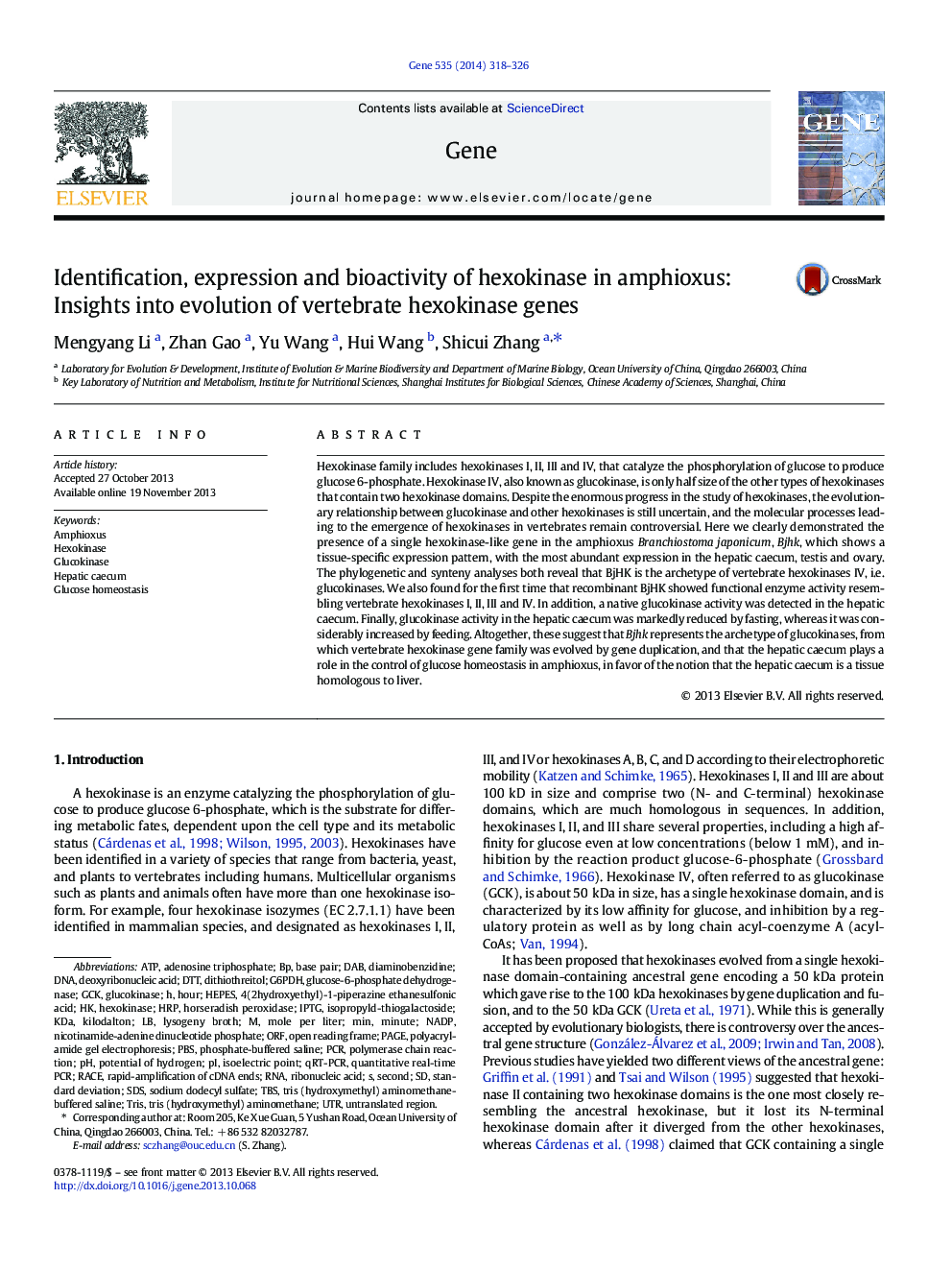| Article ID | Journal | Published Year | Pages | File Type |
|---|---|---|---|---|
| 5905963 | Gene | 2014 | 9 Pages |
Abstract
Hexokinase family includes hexokinases I, II, III and IV, that catalyze the phosphorylation of glucose to produce glucose 6-phosphate. Hexokinase IV, also known as glucokinase, is only half size of the other types of hexokinases that contain two hexokinase domains. Despite the enormous progress in the study of hexokinases, the evolutionary relationship between glucokinase and other hexokinases is still uncertain, and the molecular processes leading to the emergence of hexokinases in vertebrates remain controversial. Here we clearly demonstrated the presence of a single hexokinase-like gene in the amphioxus Branchiostoma japonicum, Bjhk, which shows a tissue-specific expression pattern, with the most abundant expression in the hepatic caecum, testis and ovary. The phylogenetic and synteny analyses both reveal that BjHK is the archetype of vertebrate hexokinases IV, i.e. glucokinases. We also found for the first time that recombinant BjHK showed functional enzyme activity resembling vertebrate hexokinases I, II, III and IV. In addition, a native glucokinase activity was detected in the hepatic caecum. Finally, glucokinase activity in the hepatic caecum was markedly reduced by fasting, whereas it was considerably increased by feeding. Altogether, these suggest that Bjhk represents the archetype of glucokinases, from which vertebrate hexokinase gene family was evolved by gene duplication, and that the hepatic caecum plays a role in the control of glucose homeostasis in amphioxus, in favor of the notion that the hepatic caecum is a tissue homologous to liver.
Keywords
NADPkDaHRPTBSkiloDaltonqRT-PCRPAGETRISDTTIPTGORFGCKHEPESSDSG6PDHPBSDABDNAAdenosine TriphosphateATPAmphioxusdeoxyribonucleic acidribonucleic acidRNApolyacrylamide gel electrophoresisstandard deviationtris (hydroxymethyl) aminomethanerapid-amplification of cDNA endsbase pairMinminuteSeconddiaminobenzidinedithiothreitolHoursodium dodecyl sulfateopen reading framelysogeny brothPhosphate-buffered salineRaceUTR یا untranslated regions untranslated regionIsoelectric pointnicotinamide-adenine dinucleotide phosphateGlucose homeostasishexokinasepolymerase chain reactionquantitative real-time PCRPCRpotential of hydrogenHorseradish peroxidaseglucose-6-phosphate dehydrogenaseGlucokinase
Related Topics
Life Sciences
Biochemistry, Genetics and Molecular Biology
Genetics
Authors
Mengyang Li, Zhan Gao, Yu Wang, Hui Wang, Shicui Zhang,
